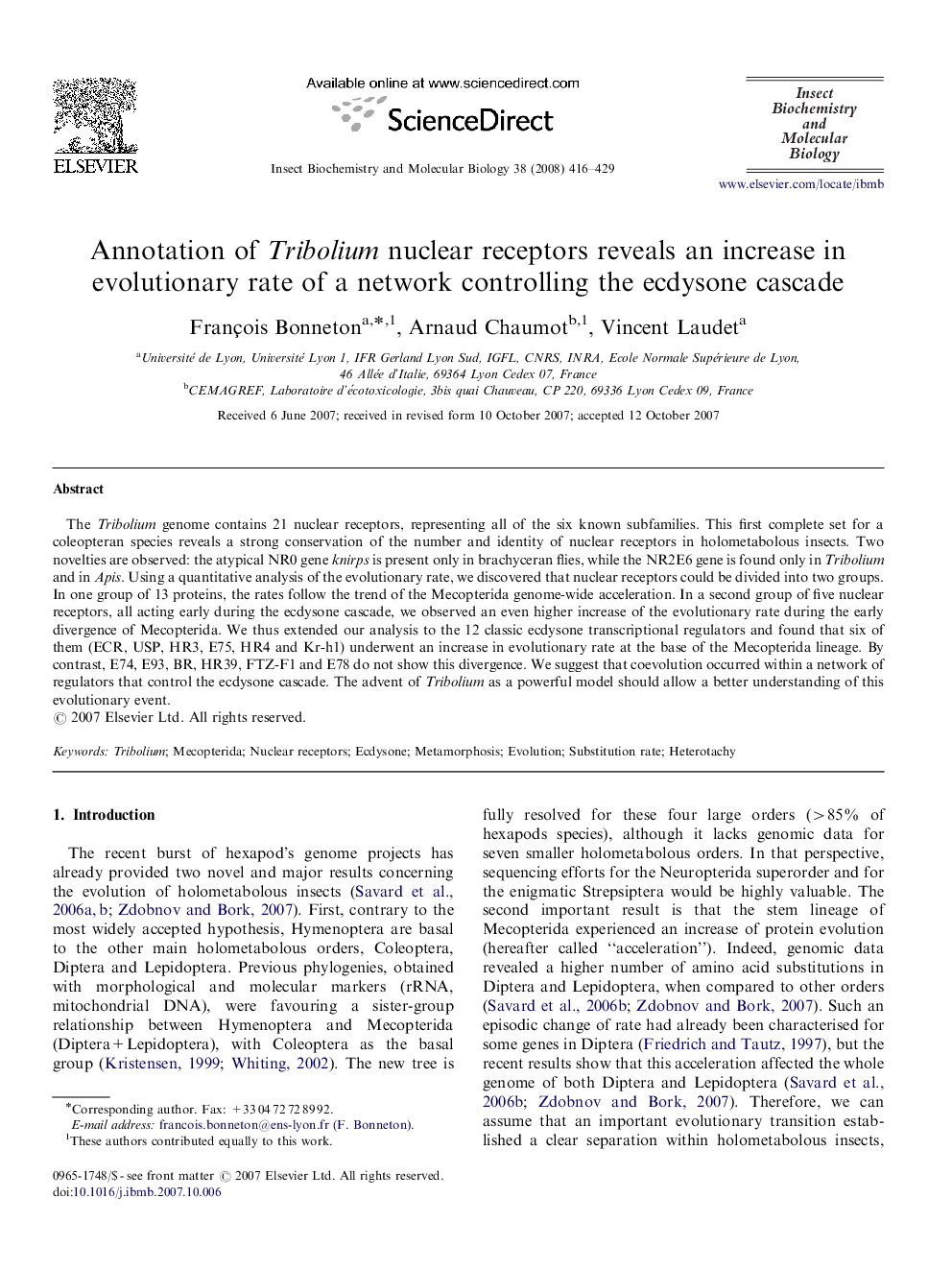| Article ID | Journal | Published Year | Pages | File Type |
|---|---|---|---|---|
| 10824227 | Insect Biochemistry and Molecular Biology | 2008 | 14 Pages |
Abstract
The Tribolium genome contains 21 nuclear receptors, representing all of the six known subfamilies. This first complete set for a coleopteran species reveals a strong conservation of the number and identity of nuclear receptors in holometabolous insects. Two novelties are observed: the atypical NR0 gene knirps is present only in brachyceran flies, while the NR2E6 gene is found only in Tribolium and in Apis. Using a quantitative analysis of the evolutionary rate, we discovered that nuclear receptors could be divided into two groups. In one group of 13 proteins, the rates follow the trend of the Mecopterida genome-wide acceleration. In a second group of five nuclear receptors, all acting early during the ecdysone cascade, we observed an even higher increase of the evolutionary rate during the early divergence of Mecopterida. We thus extended our analysis to the 12 classic ecdysone transcriptional regulators and found that six of them (ECR, USP, HR3, E75, HR4 and Kr-h1) underwent an increase in evolutionary rate at the base of the Mecopterida lineage. By contrast, E74, E93, BR, HR39, FTZ-F1 and E78 do not show this divergence. We suggest that coevolution occurred within a network of regulators that control the ecdysone cascade. The advent of Tribolium as a powerful model should allow a better understanding of this evolutionary event.
Related Topics
Life Sciences
Agricultural and Biological Sciences
Insect Science
Authors
François Bonneton, Arnaud Chaumot, Vincent Laudet,
